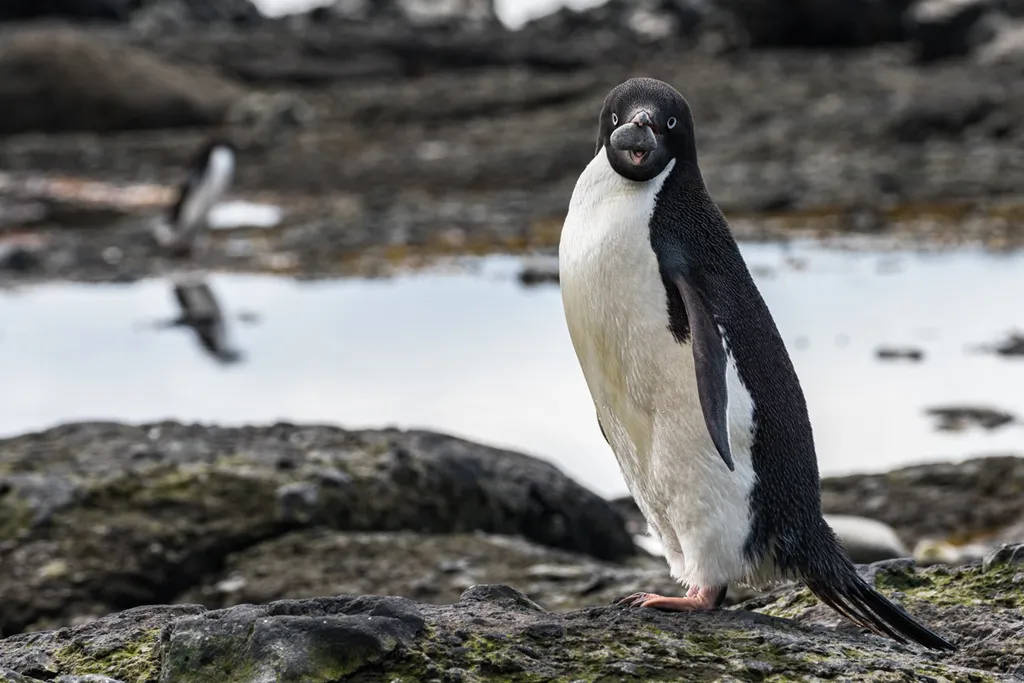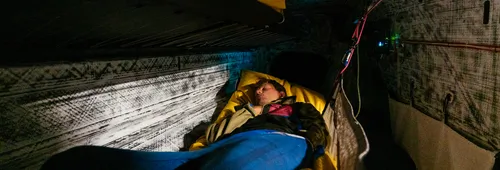3. Human activity disturbs them [True and False]
Coastal scientific stations on the White Continent were often built close to penguin colonies in order to study them. The question of disturbance only arose later. At Dumont-d'Urville, for example, cohabitation rules were put in place to limit disturbance and researchers tested the effect of their presence. The young chicks experience stress, but not the adults. Tourist visits to breeding sites are supervised by guides, criticised by environmentalists and studied by a few scientists.
4. They build stone nests [True]
To come back to the previous question, the construction of Dumont-d'Urville would have produced small stones that are appreciated by Adélie penguins when they build their nests. These numerous small stones near the station's foundations could help the penguins to build a cup in which they lay their eggs. Males and females look after their nests, and this complicity is not called into question when it comes to stealing stones from their neighbours.
5. The ice stops them sailing in the ocean [True and False]
Walking on the pack ice allows them to reach open water, when it is neither too rough nor too vast, in which case the penguins would tire to get back to the ocean from the coast. Secondly, the ideal ice concentration for penguins is 80%, so they can dive, swim, jump and rest on the drifting ice that carries them northwards in winter and southwards in summer. They can travel 12,000 kilometres a year in the Ross Sea. In the Weddell Sea, sea ice conditions are still stable despite climate change, and scientists consider it to be a refuge area.











